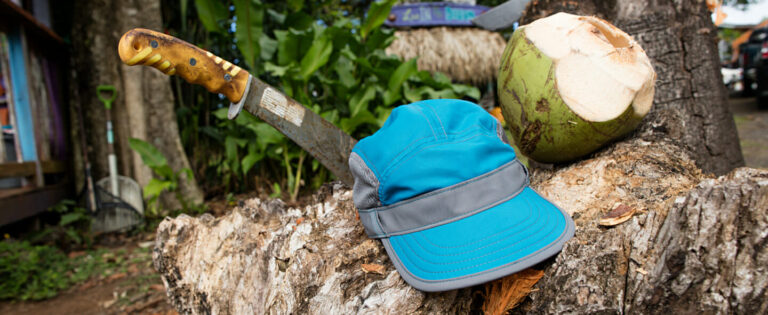
During search-and-rescue operations, teamwork is absolutely crucial. It may come as a surprise, but if your companion is buried under merely 30 centimetres of packed snow, their chances of getting out without your help are slim to none. For this reason, the majority of the mandatory avalanche safety gear for today’s mountain sports are designed specifically for search and rescue. Avalanche transceivers, probes and shovels, for example, have all been constructed for this purpose. These are so important. Both you and your companion have to be able to trust them with your life. The only piece of equipment designed for self-rescue is the avalanche backpack.
This contains loads of technology and costs as much as all the other tools altogether. Despite how expensive these packs can be, you shouldn’t hesitate to invest in one if you frequent the backcountry. After all, as the frequency and length of your adventures increase, so too will the probability of you running into an avalanche. An avalanche airbag that is deployed in time can significantly increase your chances of survival.
In addition to these four standard pieces of equipment, there are two rarer devices called an Avalung and an avalanche ball. These don’t have anything to do with rescue per se, but they can increase a buried individual’s chances of survival by either increasing the length of time he or she can breathe or reducing the search time. We will provide more detailed information on these items at the end of the post.
Avalanche transceiver – Searching for avalanche victims

The basic principle of avalanche beacons is quite simple: they transmit radio frequencies to determine the devices’ location. If each member of a group has a device, the rescuers will be able to locate the victim using their receiver. The great thing about these devices is that the victim’s device is automatically switched to send mode.
The newest devices are almost as easy to use in practice as they make it out to be in theory. Most of the technical problems and operating difficulties of the past have been completely eliminated with the new generation. The new devices now have a digital display that not only shows the distance but also the direction by using arrows pointing to where the victim is buried. Plus, thanks to multiple antennas (usually three), multiple victims can be displayed at the same time. A marking function for multiple burials is now a standard feature as well. If you find yourself in the vicinity of a victim, the acoustic search guidance will help with the fine search.
Even with all these innovations, it is absolutely essential that you take an avalanche rescue course and practise using the equipment on a regular basis.
Avalanche probe – Probing for the victim

The newest generation of avalanche transceivers are by no means perfect (yet). They do not show the precise location of the avalanche victim, nor do they show the burial depth. This is where the avalanche probe comes in, which is a thin, collapsible aluminium pole. Since these avalanche rescue situations force you to act as quickly as possible, whilst often dealing with quite a bit of resistance from hard clumps of snow, probing is not as easy as you might think.
In terms of material and functionality, the different models are more or less the same. It’s when it comes to length that you need to have a quick think: You should always consider the fact that the probe should fit in your backpack when collapsed.
Avalanche shovel – Rescuing the avalanche victim

Once you’ve located the victim, you need to dig them out as fast as possible. And, this is something you won’t be able to achieve with your skis or snowboard, especially in hard avalanche snow. Instead, you need a relatively small carbon or aluminium shovel that collapses and can be carried in your backpack.
Depending on how steep the slope is, you should not dig from above but rather from the side toward the victim. This will not only help to prevent you standing on top of the victim but also reduce the risk of injurying them with the shovel. Plus, it is easier to dig this way.
As with shovelling, there are a couple of things you should keep in mind when choosing the avalanche shovel itself, because the minor differences in the size and shape of the parts can have such a major impact on a shovel’s performance.
Avalanche ball – Get found faster
The avalanche ball was invented in Austria. The compressed ball is meant to be carried in a backpack. If a skier gets caught in an avalanche, the ball is released and rapidly expands by way of a spring. Because the ball is connected to the avalanche victim by a six-metre-long safety cord, it remains on the surface of the avalanche like a red buoy. Once the avalanche has stopped, this device allows rescue teams to immediately locate the burial victim. Then all they need to do is pull the cord to determine the precise location.
The cool thing about this device is that the release mechanism does not require gas cartridges or any other kind of propellant and can thus be used repeatedly – even multiple times on a single tour. Weighing only a single kilogram, the ball will hardly add any weight to your pack and can be attached to any standard backpack. This along with a standard avalanche set is quite the powerful combo, even without an avalanche backpack.
Avalanche backpack – Floating on the surface of the avalanche

The avalanche backpack is quite light as well, with the airbag system adding only about two kilos to the pack’s total weight. That may sound like a lot to some, but considering the fact that those two kilos could potentially save your life, it’s actually not that much at all. Of course, it doesn’t guarantee your survival – the airbags “only” give your chances of survival a significant boost – quite literally in fact!
They use the physical features of a flowing avalanche in which the chunks of snow are sorted: the smaller ones rise, whilst the larger ones sink. If you activate your airbag pack in time, the airbags will inflate, giving you an additional volume of up to 170 litres within mere seconds. The added volume gives you a major lift in an avalanche, significantly increasing your chance of landing of the surface of the avalanche once it has come to a halt.
Today, there are four different systems, each of which have certain advantages and disadvantages. There are models with additional protection for your head and spine, detachable systems and models that allow for multiple releases in the event of additional avalanches.
Avalung – A possible addition

The Avalung can be added to your avalanche safety gear but is not intended to replace an avalanche airbag. It is worn around your upper body like a sternum strap and is designed to help you to continue to breathe with snow packed around your body.
However, to be able to do so, you’ll need to have the mouthpiece between your teeth at the very moment you’re submerged. Somehow you have to manage to get the tube to your mouth during an avalanche and keep the mouth piece there, even when subjected to the brutal force of the avalanche. Even though there have been people who have actually managed to do this and it has indeed saved lives, it can also go horribly wrong. For this reason, never let the Avalung lull you into a false sense of security.
Conclusion
If you’re planning a trip in avalanche-prone areas, it is incredibly important to go about it in a responsible manner, meaning all participants must be capable of planning and executing avalanche rescue missions as quickly and responsibly as possible.
To do this, it is absolutely essential that everybody in your party know how to use the safety equipment mentioned above – preferably in their sleep. You shouldn’t rely on mountain rescue teams. Even though the rescue teams in the Alps may be the quickest and most efficient in the world, it’s difficult for even them to rescue an avalanche victim in time. Don’t get me wrong, I’m not criticising professional mountain rescue teams by any means – we’re merely trying to emphasise how important it is to plan your trip accordingly, taking the risks of avalanches into consideration.
If you still get caught in an avalanche, only then is it time for your safety equipment and mountain rescue to act.



